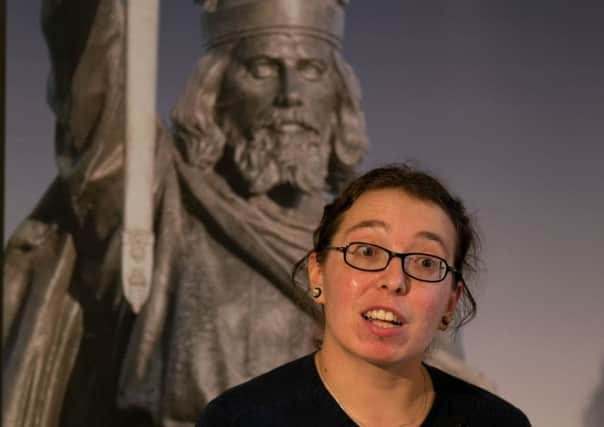Bones could be King Alfred or Edward the Elder


Archaeologists carried out an exhumation of the grave at St Bartholomew’s Church in Winchester, Hampshire, last March in a bid to find the last resting place of the ninth-century king.
Tests have shown that those remains were not the influential warrior king, but further investigations have uncovered a pelvic bone which had been in storage at Winchester City Museum from a previous excavation carried out at the end of the 1990s.
Advertisement
Hide AdAdvertisement
Hide AdCarbon dating has shown this bone dates to 895-1017, which scientists from the University of Winchester believe ties in with the death of the two kings.
According to historical records, when King Alfred died in 899, he was interred at the Anglo-Saxon cathedral in Winchester, known as the Old Minster, and his bones were later moved by monks to New Minster and then Hyde Abbey, still in Winchester.
Hyde Abbey was dismantled after the dissolution of the monasteries in the 16th century and the bodies buried on the site are believed to have been “scattered” when a prison workhouse was built there in 1788.
It was during a community excavation in the late 1990s that the pelvic bone believed to be Alfred’s or Edward’s was found.
But no analysis of the find was undertaken because of lack of funding and because a bone found next to it was found to be from the 17th or 18th century and it was not thought to be of any interest.
Dr Katie Tucker, researcher in human osteology at the University of Winchester, was made aware of the existence of the bones after the skeletons exhumed last year turned out to be a red herring.
She arranged for tests to be carried out on the pelvic bone, which not only dated it but found that it belonged to a man aged between 26 and 45.
Dr Tucker said: “The simplest explanation, given there was no Anglo-Saxon cemetery at Hyde Abbey, is that this bone comes from one of the members of the West Saxon royal family brought to the site.
Advertisement
Hide AdAdvertisement
Hide Ad“Given the age at death of the individual and the probable male identity, the plausible candidates are King Alfred, King Edward the Elder, or the brother of King Edward, Aethelweard.
“All were buried in the Abbey. However, historical evidence indicates only the coffins of Alfred and Edward were at the site of the high altar.
“The discovery of the bone in a pit dug into the graves in front of the high altar makes it far more likely it comes from either Alfred or Edward.”
Dr Nick Thorpe, head of the department of archaeology, said: “We believe that we are helping the city to right a historical wrong done to the remains of these great kings.
“This began with the dissolution of Hyde Abbey in 1539 to be followed by centuries of neglect, destruction and disturbance up to the last antiquarian diggings in 1901.
“Monks brought their remains to Hyde in 1110 because they wanted to preserve and honour them, and this project enables us to do this once more.”
The university is now going to work with local heritage charity Hyde900 on further investigations into the findings, with a suitable resting place being planned for the royal bones.
Dr Tucker said that it might be possible to extract DNA from the pelvic bone but said the problem was finding another DNA source to check it with.